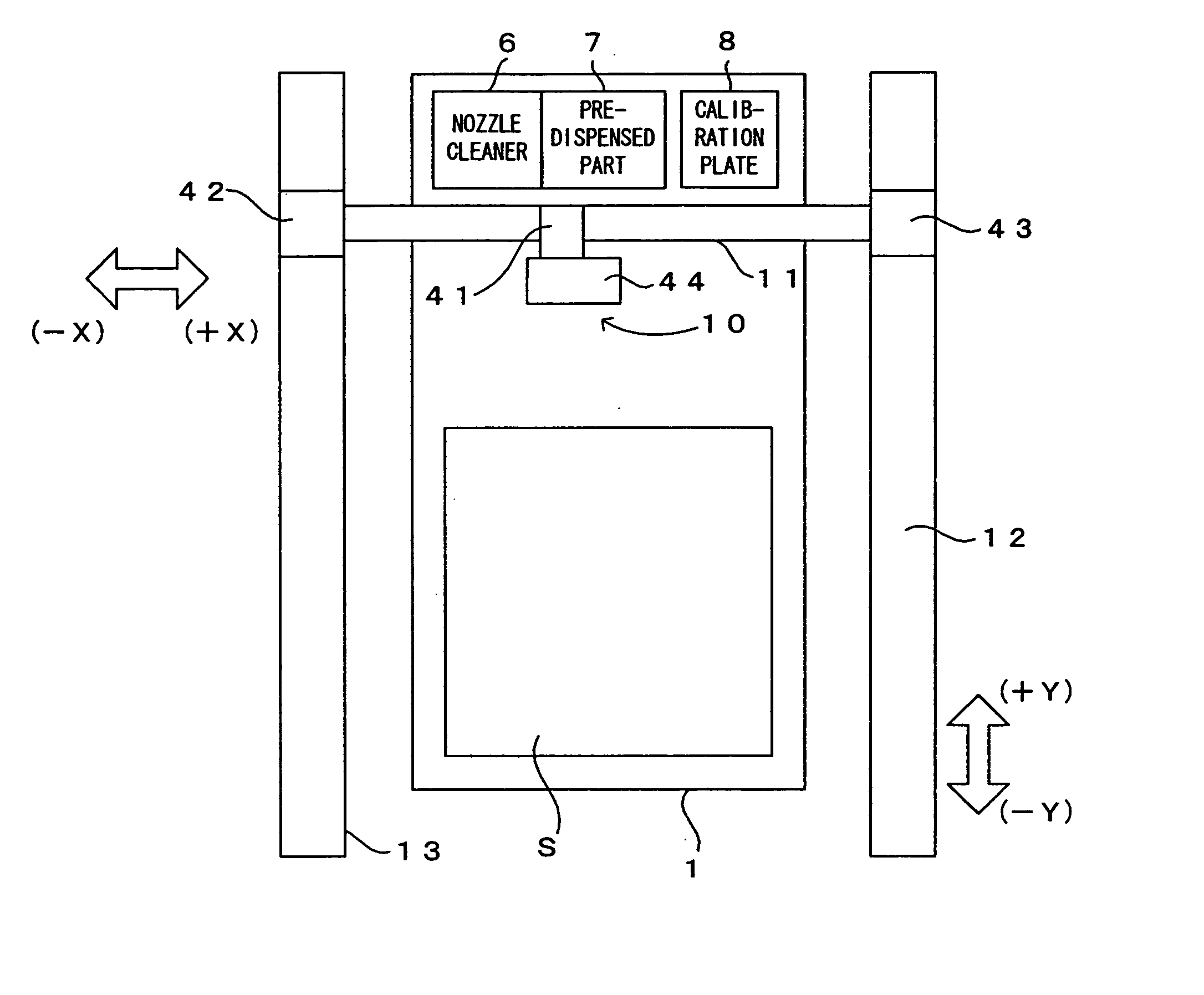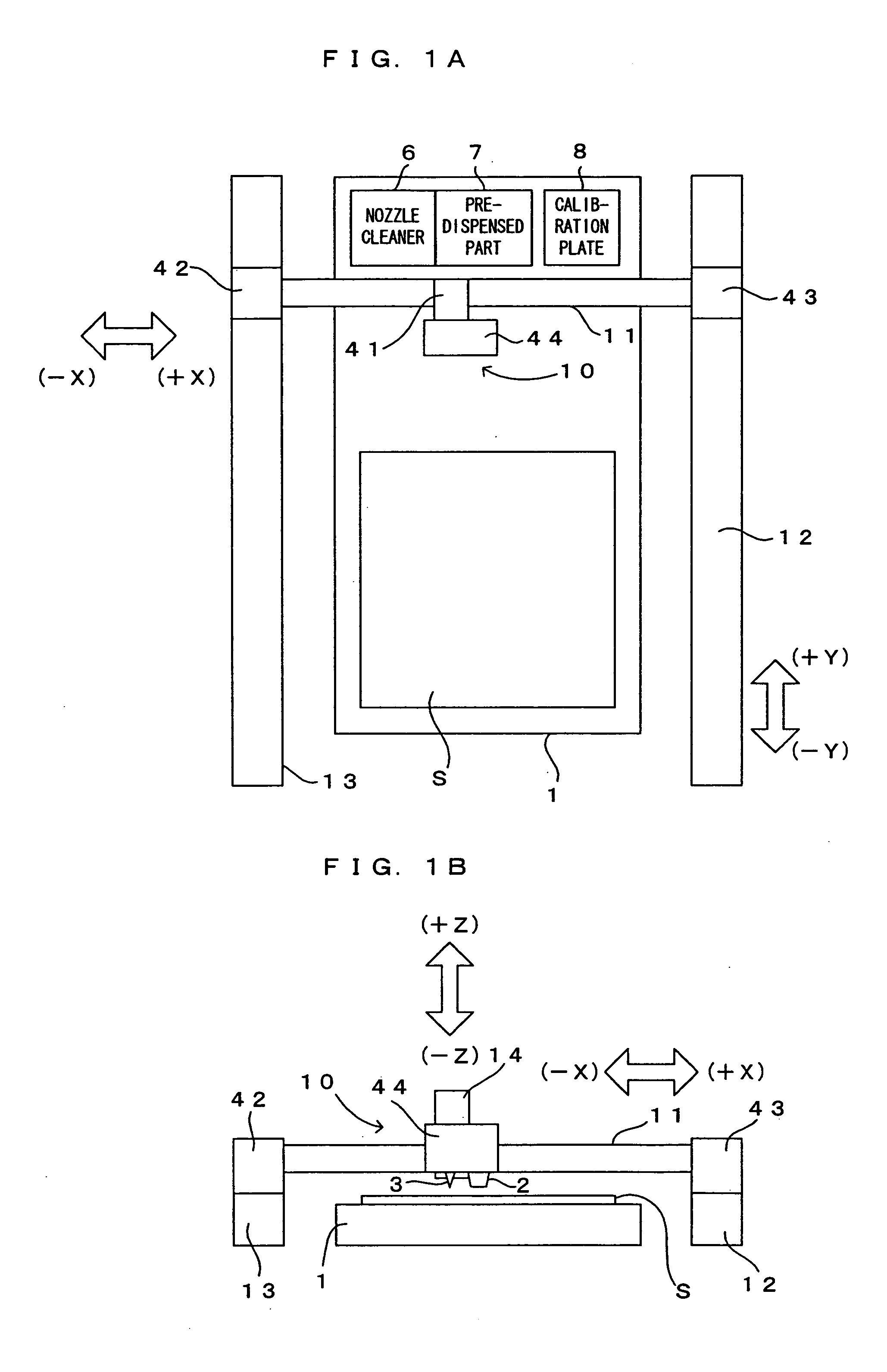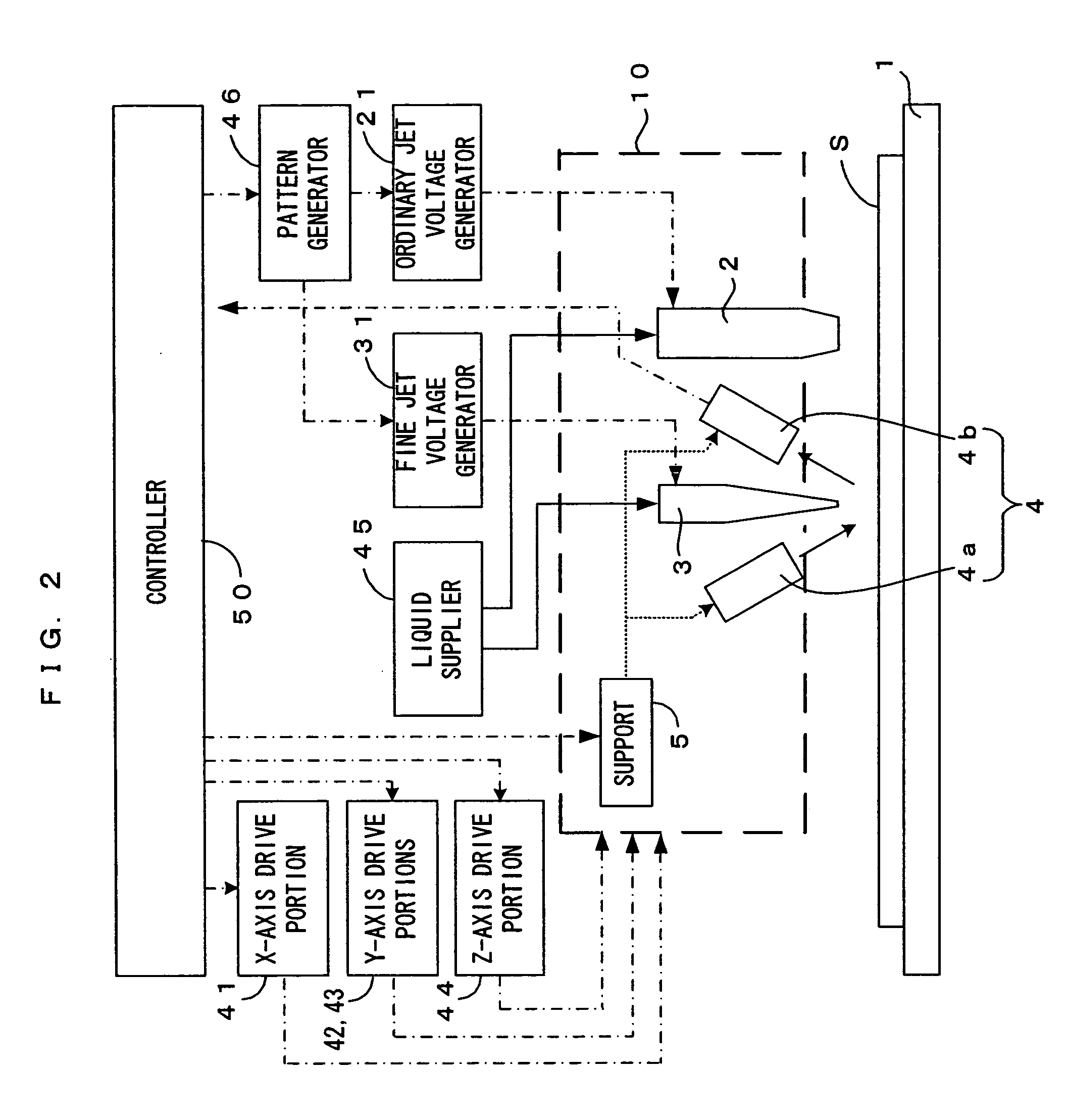Processing apparatus which performs predetermined processing while supplying a processing liquid to a substrate
a processing apparatus and substrate technology, applied in the direction of spray discharge apparatus, conductive pattern formation, electromechanical system manufacture, etc., can solve the problems of reducing the particle diameter of a drop, clogging of the nozzle, and affecting the efficiency of processing, so as to achieve efficient wiring and limited injection capability
- Summary
- Abstract
- Description
- Claims
- Application Information
AI Technical Summary
Benefits of technology
Problems solved by technology
Method used
Image
Examples
first embodiment
[0032] (Forming Fine Line)
[0033]FIG. 1 is a drawing which shows a first embodiment of a processing apparatus according to the present invention. FIG. 2 is a schematic drawing which shows the electric structure of the processing apparatus of FIG. 1. This processing apparatus is a processing apparatus which forms a predetermined pattern while supplying a metal paste, a colloid solution of fine metal particles or the like (hereinafter referred to simply as a “solution”) as the “processing liquid” of the present invention to a substrate S which is an object-to-be-processed. In this processing apparatus, a substrate holder 1 holds the substrate S, and by means of vacuum suction from a suction groove (not shown) which is formed on the substrate holder 1, the substrate S is fixed. As the substrate holder, a stone faceplate can be used for example. In the first embodiment, the substrate holder 1 thus corresponds to the “substrate holding means.”
[0034] Disposed above the substrate holder 1 ...
second embodiment
[0064] (Manufacturing DNA Microarray)
[0065]FIG. 10 is a drawing which shows the second preferred embodiment of the processing apparatus according to the present invention. This processing apparatus is a processing apparatus which manufactures a DNA micro array while supplying a probe DNA solution (hereinafter referred to as a “DNA solution”) as the “processing liquid” of the present invention to the substrate S which is an object-to-be-processed. A slide glass or an Si wafer is used as the substrate S. Further, to increase the processing efficiency, plural substrates S are arranged on the substrate holder 1. For instance, 20×20 (total 400) substrates S are arranged.
[0066] A DNA micro array referred to here is what is obtained by arranging DNA fragments corresponding to genes of an organism to analyze at a high density as small spots on a substrate. For instance, DNAs taken from an organism are isolated and amplified by the PCR (Polymerase Chain Reaction) method, and DNA solutions ...
PUM
| Property | Measurement | Unit |
|---|---|---|
| diameter | aaaaa | aaaaa |
| widths | aaaaa | aaaaa |
| diameter | aaaaa | aaaaa |
Abstract
Description
Claims
Application Information
 Login to View More
Login to View More - R&D
- Intellectual Property
- Life Sciences
- Materials
- Tech Scout
- Unparalleled Data Quality
- Higher Quality Content
- 60% Fewer Hallucinations
Browse by: Latest US Patents, China's latest patents, Technical Efficacy Thesaurus, Application Domain, Technology Topic, Popular Technical Reports.
© 2025 PatSnap. All rights reserved.Legal|Privacy policy|Modern Slavery Act Transparency Statement|Sitemap|About US| Contact US: help@patsnap.com



